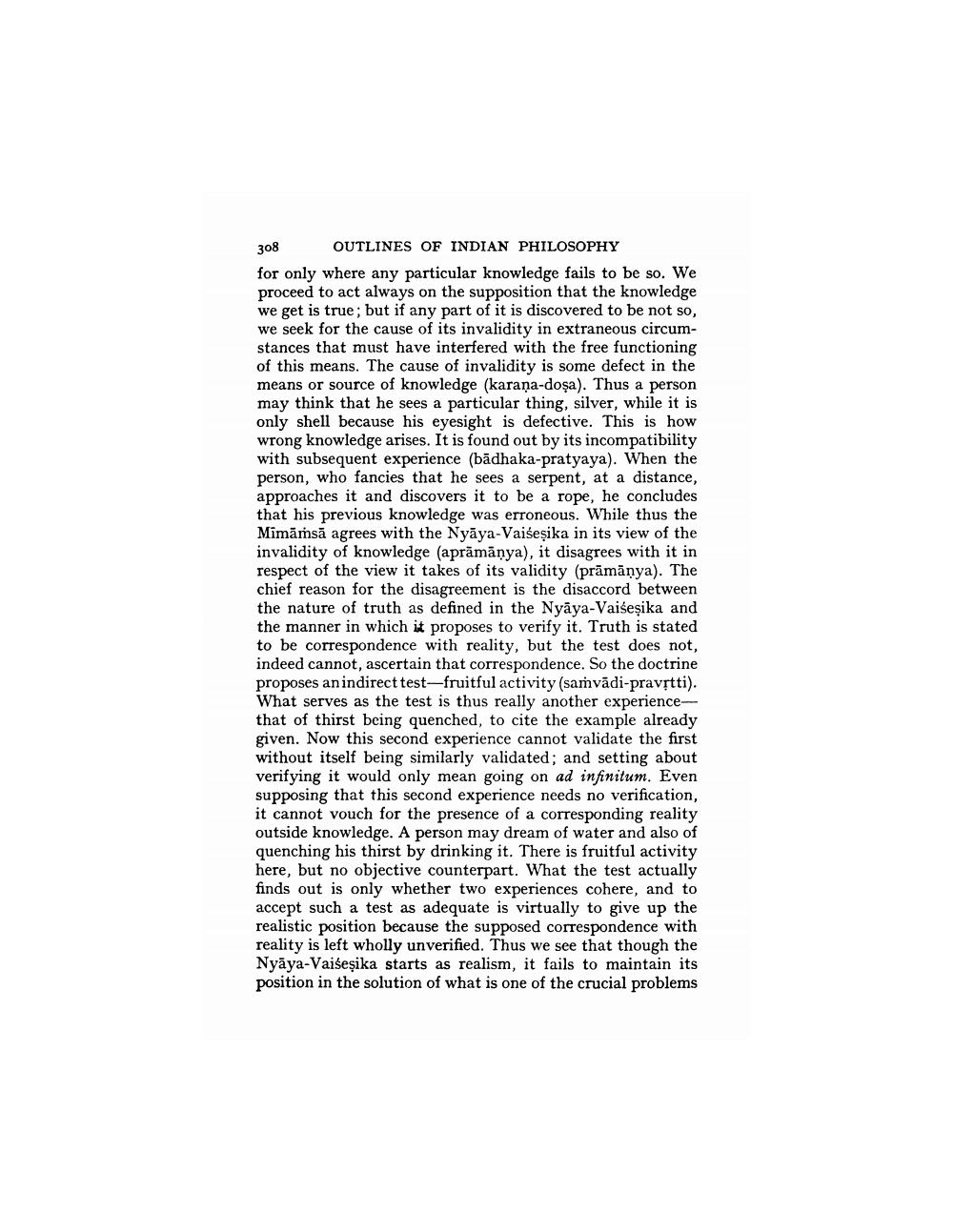________________
308 OUTLINES OF INDIAN PHILOSOPHY for only where any particular knowledge fails to be so. We proceed to act always on the supposition that the knowledge we get is true; but if any part of it is discovered to be not so, we seek for the cause of its invalidity in extraneous circumstances that must have interfered with the free functioning of this means. The cause of invalidity is some defect in the means or source of knowledge (karaņa-dosa). Thus a person may think that he sees a particular thing, silver, while it is only shell because his eyesight is defective. This is how wrong knowledge arises. It is found out by its incompatibility with subsequent experience (bādhaka-pratyaya). When the person, who fancies that he sees a serpent, at a distance, approaches it and discovers it to be a rope, he concludes that his previous knowledge was erroneous. While thus the Mimāṁsā agrees with the Nyāya-Vaiseșika in its view of the invalidity of knowledge (aprāmānya), it disagrees with it in respect of the view it takes of its validity (prāmänya). The chief reason for the disagreement is the disaccord between the nature of truth as defined in the Nyāya-Vaiseșika and the manner in which it proposes to verify it. Truth is stated to be correspondence with reality, but the test does not, indeed cannot, ascertain that correspondence. So the doctrine proposes an indirect test-fruitful activity (samvādi-pravrtti). What serves as the test is thus really another experiencethat of thirst being quenched, to cite the example already given. Now this second experience cannot validate the first without itself being similarly validated; and setting about verifying it would only mean going on ad infinitum. Even supposing that this second experience needs no verification, it cannot vouch for the presence of a corresponding reality outside knowledge. A person may dream of water and also of quenching his thirst by drinking it. There is fruitful activity here, but no objective counterpart. What the test actually finds out is only whether two experiences cohere, and to accept such a test as adequate is virtually to give up the realistic position because the supposed correspondence with reality is left wholly unverified. Thus we see that though the Nyāya-Vaiseșika starts as realism, it fails to maintain its position in the solution of what is one of the crucial problems




